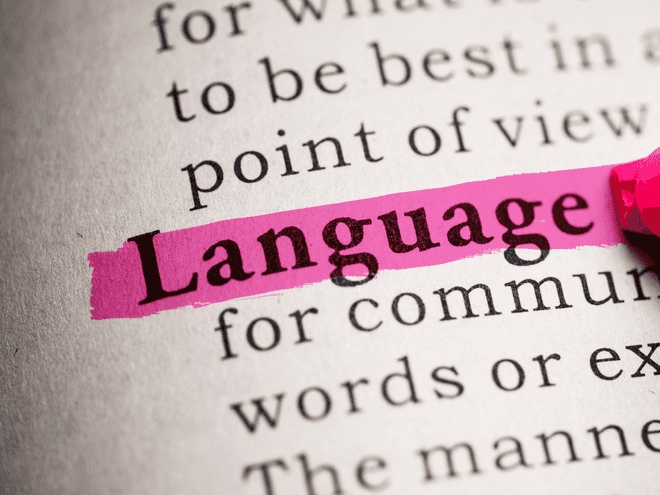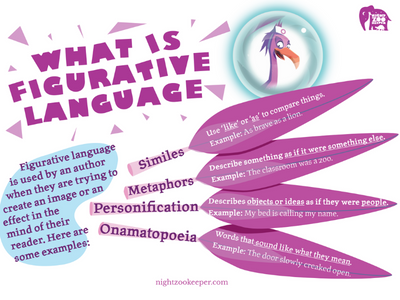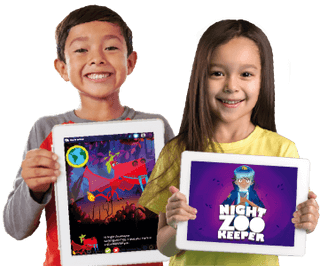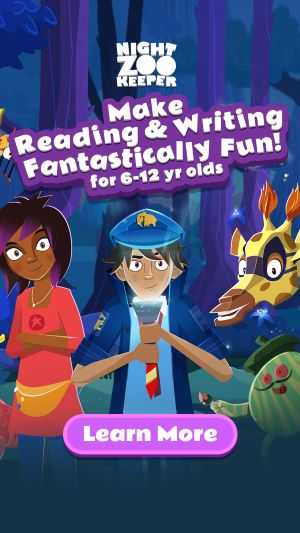Figurative Language
Learn all about figurative language

Figurative language is an important concept for young writers to understand and use. It can help children immensely improve the quality of their story writing.
The purpose of figurative language is to create vivid imagery within a piece of writing by using non-literal language to describe things and convey meaning. Figurative language helps readers understand the meaning of something from a different perspective, and creates deeper understanding.
The most common types of figurative language are:
Simile
A simile is a literary device that is used in writing to make comparisons between two things, with the aim to express a certain meaning to the readers.
Similes use “like” or “as” to describe something.
Examples of similes
- My sister was as busy as a bee today.
- Night Zookeeper Will is as brave as a lion.
- The two of them are like two peas in a pod.
Metaphor
Just like a simile, a metaphor is a figure of speech used in writing to make a direct comparison between two distinct things. Similarly, metaphors are also used to create non-literal meanings, as they often describe something as if it were something else.
Examples of metaphors
- Life’s a rollercoaster.
- He has a heart of stone.
- My mum is an early bird.
What’s the difference between similes and metaphors?
Although similes and metaphors are similar because they both make comparisons between two things, they have one important difference. Similes make comparisons by comparing something to something else. Metaphors make comparisons by expressing that something is something else.
Activities on similes and metaphors
Similes and metaphors are tricky literary devices for young children to understand and master. Here’s a list of activities to try at home with your child writer to help them practice:
- Read books with your child and ask them to spot whenever a simile or metaphor is used.
- Give your child a simile or metaphor and ask them to draw a picture of it.
- Challenge your child to write sentences using the words ‘like’ or ‘as’.
- Give children a set of five similes and metaphors. Now ask them to include them all in their own story.
- Challenge children to write a simile poem where each line includes a different simile.

Personification
Personification is used in stories and poems to give human characteristics to objects or ideas. It’s used to describe something that is nonhuman in a human-like way.
Often, personification is useful because it’s unexpected, which makes a piece of writing more vivid in the reader’s mind.
Examples of personification
Here are some examples of personification to further your child’s understanding of the concept:
- “That slice of pizza is calling my name.”
- “His car engine roared as he drove off.”
- “The cat scowled at me in disbelief.”
- “The sky was so unhappy without sunlight.”
- “My heart was beating so hard, it was practically jumping in and out of my body.”
Activities to practice personification
Here are some ways your child can practice personification:
- Use an image of nature as your subject; it could be a sunset, mountains, the beach, or whatever you’d like. Write 2-3 sentences using personification to describe what you see!
- Find a household item and use personification to describe it. You can even recruit your parents or siblings to make it a competition to see who can come up with more ways to describe it!
- Write a recipe or instructions on how to make your favorite type of food! Each step should include personification of the food or kitchen tools you use to make your favorite food. Bring your food to life!
- Imagine a rough storm taking over your town. What human emotions or actions could you use to describe it? Make a list of your ideas.
- Think of your favorite animal and why it’s your favorite. Use personification to best describe it in 3-4 sentences. Describe why you love it so much through personification!
Onomatopoeia
Onomatopoeias are words used in written stories to demonstrate sound effects. They are words that mean exactly what they sound like. Readers can get a better grasp of the sounds that happen within a story when onomatopoeias are used.
Examples of onomatopoeia
- Whoosh
- Pitter-patter
- Bong
- Bonk
- Slurp
- Ha-ha
- Boom
- Vroom
- Splat
- Kerplunk
- Bam
- Hush
- Brrr
- Beep
- Achoo
Here are some of the above onomatopoeias used in sentences:
- Bonk! Sam felt a throbbing pain in his head after accidentally running into a nearby tree.
- Riya told Will a knock-knock joke. They couldn't contain their laughter. Ha-ha-ha-ha-ha! They laughed in unison.
- Achoo! “Bless you,” said Professor Penguin when he heard Florence Flamingo sneeze.
- Grudge the Bear thinks he hears a motorcycle off in the distance. Vrooooooommmm! He hears the engine roar.
- “What is that sound?” asks Eek the Eskimouse. Beep, beep, beep, beep… “It won’t stop!”

Hyperbole
Hyperbole is a figurative device that demonstrates intentional exaggeration. It’s used to emphasise a certain idea, time frame, or feeling, using exaggerated literal language. Hyperboles are used as emphasis, but their literal meaning is not meant to be taken seriously.
Examples of hyperbole
- It’s going to take a million years to get there!
- I’m so hungry, I could eat a horse!
- I'm so tired, I could sleep for a century!
Alliteration
Alliteration is a rhetorical device that is used to create a melodic effect or inspire a certain emotion in readers. It consists of the repetition of the same letter (whether that’s a vowel or a consonant) at the start of a series of words.
Examples of alliteration
- Three tired tigers.
- The silly snake slithered.
- Giddy goats galloped gracefully.
Oxymoron
An oxymoron is a figure of speech in which two opposite words appear together in a sentence.
Examples of oxymorons
- Deafening silence.
- Dark sunshine.
- Sweet sorrow. (Shakespeare, 1597)
Activity & resource
Now that your child has learned everything they need to know about figurative language, here’s a free resource to help them practice:

How Night Zookeeper can help

Night Zookeeper is a reading & writing program that uses gamification to keep children engaged, focused, and entertained as they learn!
Our program gives children unlimited access to thousands of educational games, activities, and resources, including creative writing prompts, word games, and interactive lessons.
Sign up today to get a FREE 7-day trial!
More Resources
Related Content


Make Reading & Writing Fantastically Fun!
- Award-winning reading & writing program for kids
- Improves spelling, grammar, punctuation & vocabulary
- Over 1,000 different learning games and activities



